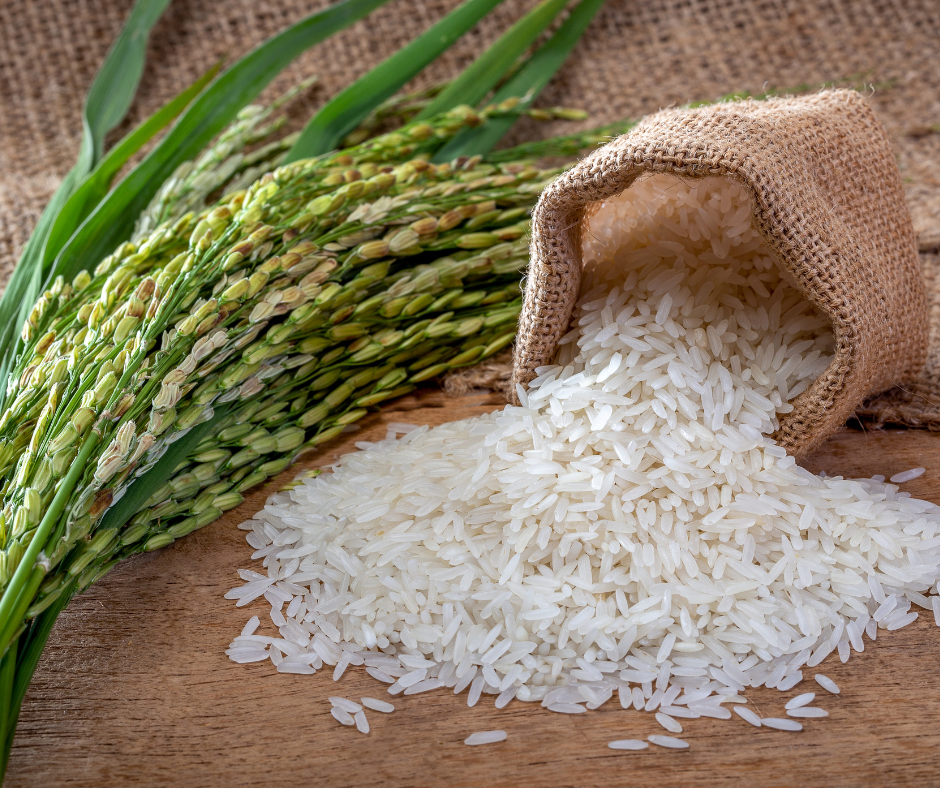The Health Benefits and Nutritional Comparisons of Sticky Rice, Black Rice, Brown Rice, and Wild Rice
 Introduction:
Introduction:
Rice is a staple food for many cultures worldwide and comes in various forms, each with its own nutritional profile. In this blog post, we will explore the health benefits and nutritional comparisons of different types of rice, including sticky rice, black rice, brown rice, and wild rice. We will also delve into the calorie content and their effects on weight loss.
- Sticky Rice: Traditional Delicacy with Surprising Health Benefits Sticky rice, also known as glutinous rice, is a staple in many Asian cuisines. Contrary to its name, sticky rice does not contain gluten but is rich in amylopectin, a type of starch that gives it its sticky texture. Some health benefits of sticky rice include:
a) Increased Bone Density: Sticky rice contains magnesium, phosphorus, and calcium, which are essential for maintaining healthy bones and preventing osteoporosis.
b) Decreased Inflammation: Sticky rice has a low glycaemic index, meaning it causes a slower rise in blood sugar levels, potentially reducing inflammation and the risk of chronic diseases.
c) Improved Heart Health: The sticky rice variety contains less fat compared to other types of rice and is cholesterol-free. Its fibre content can aid in maintaining healthy cholesterol levels.
d) Metabolism Boost: Japanese sticky rice is believed to boost metabolism, although more research is needed to confirm this claim.
Caloric Content: 100 grams of sticky rice contains approximately 97 calories.
- Black Rice: A Nutritional Powerhouse for Weight Loss Black rice, often referred to as forbidden rice, gets its name from its distinctive dark colour. This unique rice variety is packed with nutrients and antioxidants, such as anthocyanins. Here’s why black rice is beneficial:
a) Weight Loss: Black rice is lower in calories and carbohydrates compared to other types of rice. It is high in fibre, which promotes satiety and may aid in weight loss.
b) Antioxidant-Rich: Anthocyanins, the pigments responsible for black rice’s colour, act as antioxidants and protect the body against harmful free radicals.
c) Nutrient-Dense: Black rice contains essential minerals and vitamins, making it a more nutritious choice compared to white rice.
- Brown Rice: A Heart-Healthy Option Brown rice is a whole grain rice variety that retains its bran and germ layers, providing more fibre and nutrients compared to white rice. Some key points about brown rice are:
a) Heart Disease Prevention: Brown rice is a good source of minerals and antioxidants, such as selenium and manganese. Its high fibre content can help reduce the risk of heart disease.
b) Nutrient-Rich: Brown rice contains B vitamins, magnesium, and phosphorus, which are vital for energy production, bone health, and metabolism.
c) Lower Diabetes Risk: White rice, especially sticky rice, has been associated with an increased risk of type 2 diabetes. Choosing brown rice instead can be a healthier option.
- Wild Rice: Low in Carbs and High in Antioxidants Wild rice is not actually a type of rice but rather the seed of a grass species. It offers several benefits, including:
a) Low Carbohydrate Content: With only 32 grams of net carbs per cooked cup, wild rice is lower in carbs compared to other rice varieties, making it suitable for those following a low-carb diet.
b) Rich in Antioxidants: Wild rice contains anthocyanins, just like black rice, providing antioxidant properties that help protect against cell damage.
c) Nutritional Boost: Wild rice is a good source of zinc, vitamin B6, and folate, which play crucial roles in immune function, brain health, and cell growth.
Conclusion:
While all rice varieties can be enjoyed in moderation as part of a balanced diet, each type offers unique nutritional benefits. Sticky rice is beneficial for increased bone density and improved heart health, while black rice is a nutritious choice for weight loss and antioxidant intake. Brown rice is known for its potential in preventing heart disease, and wild rice stands out for its low carbohydrate content and antioxidant richness. Consider your health goals and personal preferences when selecting the rice variety that best suits your needs. Remember, portion control and overall dietary diversity are key factors in maintaining a healthy lifestyle.
